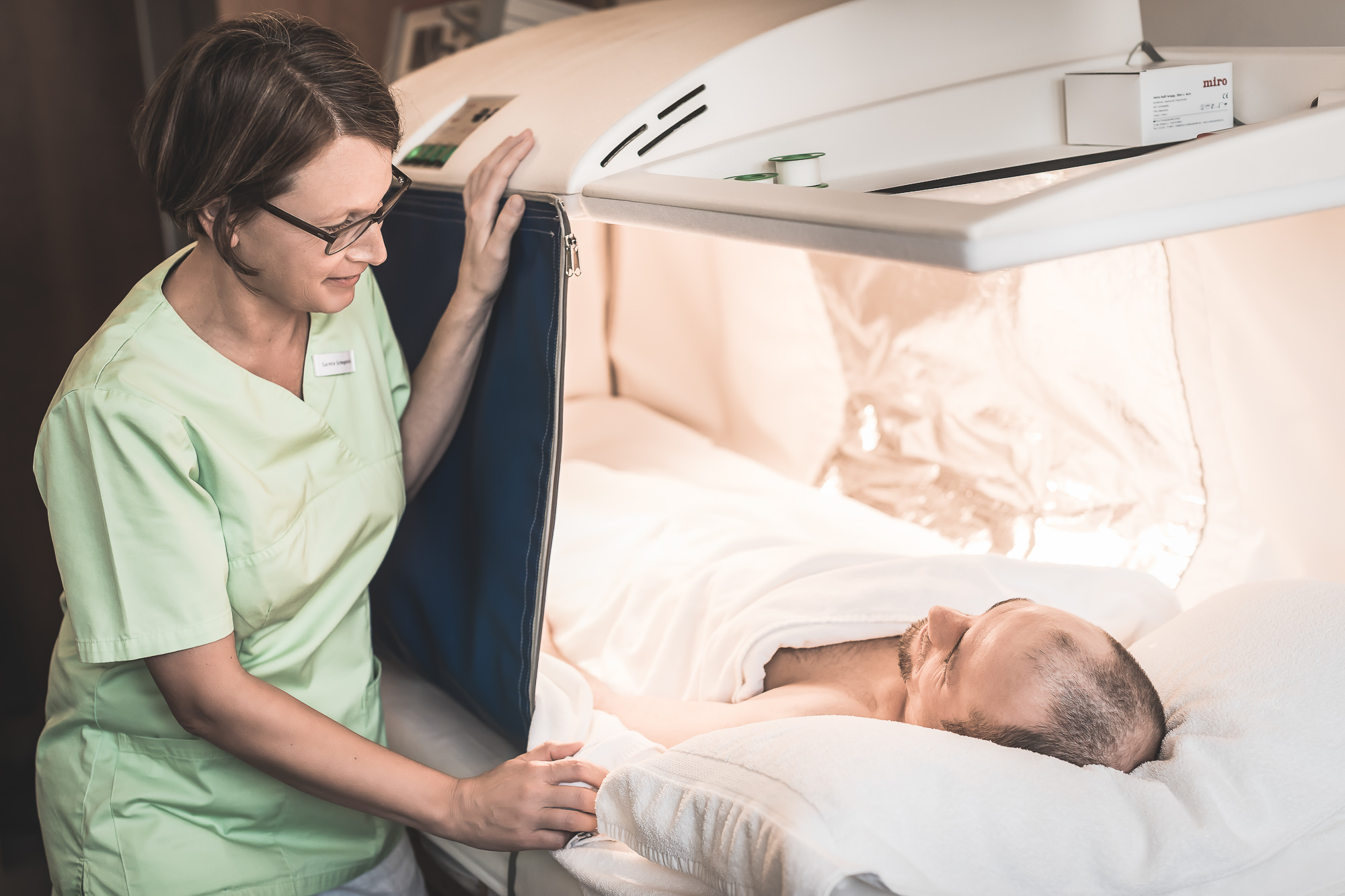Hyperthermia means overheating and is also a treatment method in oncology. Over a hundred years ago, doctors observed that patients overcame their cancer after suffering from highly febrile infections. The influence of hyperthermia on the immune system and on tumor cells has been increasingly scientifically proven in recent years. Various forms of hyperthermia have now been developed, of which the following are used at the IOZK:
Modulated electro-hyperthermia
In modulated electro-hyperthermia, the region where a tumor or metastasis is located is treated with radio waves. The patient lies on a waterbed and a probe is placed over the relevant area. The radio waves can selectively damage the tumor cells because their cell structure differs from that of healthy cells. Under certain circumstances, the cancer cells produce danger signals, which in turn can trigger an immune reaction against the cells in question. This process is known as immunogenic cell death (ICD).
Moderate whole-body hyperthermia
In moderate whole-body hyperthermia, the core body temperature is raised to fever-like temperatures using infrared radiation. Heart rate, oxygen saturation, blood pressure and respiratory rate are continuously monitored. The increase in temperature can stimulate various immune cells, which are important for cancer defense, among other things. There are also indications that hyperthermia can increase the effectiveness of chemotherapy and partially reduce its side effects.



